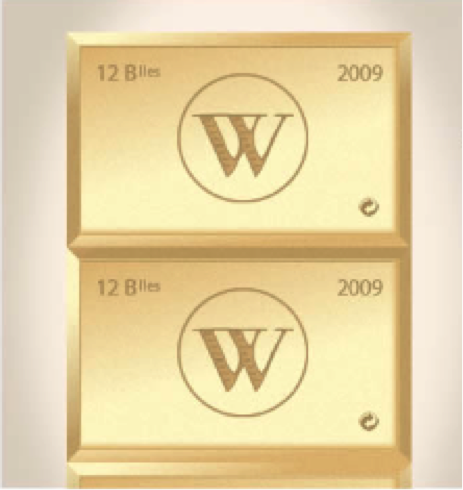by Wine Owners
Posted on 2013-05-03

Wine is a classic collectible asset.
Fine wine differs from stocks and shares in that it does not produce an income and it is not fungible. In this it shares common characteristics with other collectible classes such as art, stamps, coins, cigars and classic cars.
Fungible is another way of saying ‘interchangeable’. Cash is fungible; one £20 note having equivalence with any other note of the same value. Pure gold is also fungible, a gram being interchangeable with any other gram.
In contrast, diamonds are not perfectly fungible because varying cuts, colors, grades, and sizes make it difficult to find many diamonds that are exactly alike. Diamonds illustrate the point that fungibility is not the same as liquidity or scarcity. A global market can nonetheless exist and thrive irrespective of whether an asset class is perfectly fungible or not.
Neither is fine wine perfectly fungible, notwithstanding the contrary views of Joe Roseman, the investment economist who coined the phrase SWAG for Silver, Wine, Art and Gold.
Similarly, typically over time, one case of a particular wine of the same vintage loses its ability to be treated as interchangeable with another, due to variables such as storage location (and implied quality of condition), tax status (held under bond or duty paid), back or strip labels (denoting its original export destination e.g. China) and packaging (e.g. original wooden case or a repack).
Non-fungibility creates market pricing variability. To illustrate the point from another collectible segment, cigars stored at Dunhill in Mayfair are thought to carry a premium at auction houses; such is the excellent reputation of their humidor.
The growing globalisation of the fine wine market over the last decade, with the opening up of the Far East and Russian markets, and the future potential influence of Brazil, India and other emerging regions, has shone a spotlight on the importance of wine provenance – being the term used to describe history and current condition.
The question of how good is a wine’s provenance arises directly from the fact that wine is not fungible. The top estates (typified by the Bordeaux First Growths) are gradually adopting technological innovations that could help in future. Everyone agrees that provenance can only become increasingly important.
Where the wine is stored, how long it’s been kept there undisturbed, where it’s been and the distance it’s had to travel; are all more pertinent questions than ever before.
A new system of building and tracking provenance is surely needed, where older stocks can be traced back, through transfer of title, movements, location changes and inspections.
Traceability and reliability of source will increasingly justify higher prices for the best stock, and lead to a disparity of value or market liquidity between two bottles or cases of the same wine.
There is already a widening gap between older wines sourced direct from the producer compared with secondary market stocks in those cases where history cannot be proved.
It is well worth the investment in time to seek out secondary market stock with good provenance, in order to assure your fine wine purchases can serve as an effective store of value. Greater market transparency is surely the key to giving private buyers the confidence and information they need.
by Wine Owners
Posted on 2012-06-28
“The consumption of wine throughout the Indian sub-continent and in Persia was common 1,000 to 1,500 years ago,” according to Chris Devonshire-Ellis, principal of Dezan Shira & Associates. “In more moderate Islam it was acceptable – in moderation – and the Sufi poet Rumi is well known for his verses comparing God with the delights of the grape. (Huffington Post).
So there is wine culture deep in the psyche of the Indian sub-continent.
Imported wines in India currently attract a 150 percent tariff, in addition to duty of 4 percent. Taxes – at varying rates – are then imposed by India’s individual states. These vary from between 30 percent to 100 percent depending on the state, and have made India a wasteland for quality imported wines. Low-end brands that would retail elsewhere in Asia for US$12-US$15 typically cost upwards of US$50 a bottle.
Now a proposed deal with the EU would reportedly reduce import duties to 40 percent, boosting the sale of wines in many states.

India is a rapidly growing market and the demand will only get higher with the proposed changes. Like other areas of Asia, wine has grown immensely in popularity in India over the past decade, as a rapidly expanding middle and upper class can increasingly afford high value imported products. Wine imports have doubled over the last two years, and with India’s consumer markets expected to quadruple over the next two decades, the lowering of import duties is expected to have a significant impact.
The current trade negotiations between the EU and the Indian government have been going on for four long years but – finally – a deal looks about to be struck this year. This could have a dramatic impact on the global wine industry.
Any deal would see India slash tariffs on imported alcohol in return for an opening-up of the European market to India.
Don't expect a rerun of the China boom however. The experience with the Bordeaux First Growths boom and bust cycle during the period 2008-2012 should instill due caution into would-be drinkers, collectors and investors wherever they are.

